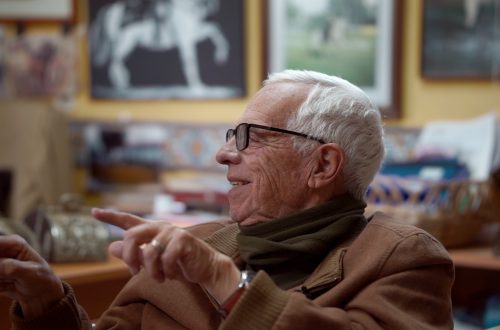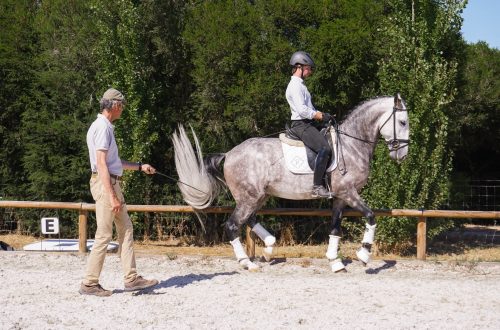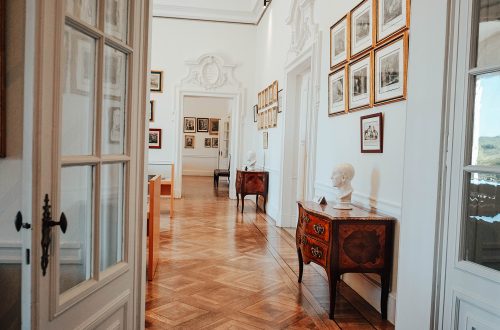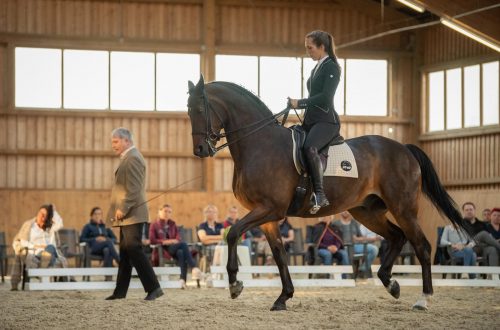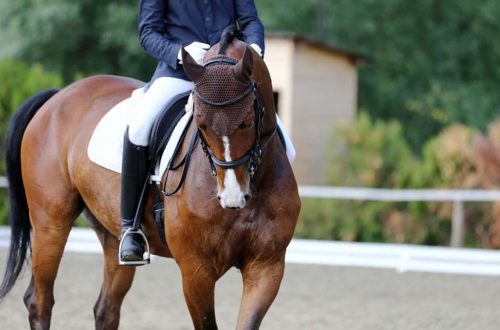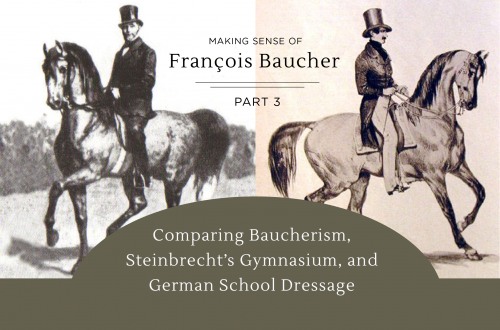-
INSIDE THE MANÈGE: Luís Valença on Equestrian Art, Nuno Oliveira, and What Makes a Classical Rider.
In this first episode of the podcast series Inside the Manège, renowned classical dressage master Luís Valença speaks about his life and work with horses, shares stories of Nuno Oliveira, and explores what sets equestrian art apart. Now one of the most well-known classical riding masters in Portugal, and having been a long-time student of Nuno Oliveira and also worked…
-
The Spanish Riding School: A Rider’s Look Inside Europe’s Oldest Classical Academy
For over 450 years, the Spanish Riding School has been a centre for cultivating classical riding from within the baroque walls of the Hofburg Palace in Vienna, Austria. Once at the seat of the Holy Roman Empire, the School began in the 16th century, and continues today with dressage performances all around the world with its riders and their famous…
-
João Pedro Rodrigues: Breeding Some of Portugal’s Best
Just across the river from Lisbon, located amidst the pine forests, grasslands, and cork trees of the Ribatejo region, João Pedro Rodrigues breeds and trains some of Portugal’s top Lusitanos at his stud farm, Coudelaria João Pedro Rodrigues. Also the Headmaster of the Portuguese School of Equestrian Art, as a breeder João Pedro has won the most championship titles of…
-
The Portuguese School of Equestrian Art: Classical Foundations for Modern Riding
As one of the four great classical riding academies in the world, the Portuguese School of Equestrian Art aims to preserve and pass on the classical riding principles of the 18th century, that were refined and practiced in Portugal’s royal court. These principles, developed across European courts during the baroque era, have laid much of the foundations of riding today.…
-
The Library of Equestrian Art: A Unique Classical Compendium
Just west of Lisbon, inside the Palace of Queluz, lies a hidden gem for riders dedicated to the art of equitation. Amongst the ornate baroque rooms and expansive French gardens of the Queluz Palace, lies an unexpected surprise: The Library of Equestrian Art. Unique in the world, this library is dedicated solely to equestrian books and art, and holds about…
-
Christina Wunderlich: Passing on Classical Riding with Vertikal
Working dedicatedly to share her passion and spread the knowledge of classical dressage, Christina Wunderlich is a sought-after trainer and teacher, and the head rider at Oliveira Stables, the now well-known classical stable located in the epicentre of the modern dressage world in southern Germany. With a highly approachable, direct manner and a tireless sense of humour, Christina specializes in…
-
António Borba Monteiro: Creating Harmony through Classical Riding
If there is one thing that distinguishes a master rider, that results from years and years of working with horses up to the highest levels, it is having an extraordinary sense of “feel.” This intangible quality is invaluable, enabling a rider to simply “know” what is needed in any given moment, and have the ability to harmoniously and seemingly effortlessly…
-
Straightening the Crooked Horse: What’s your Horse’s Asymmetry?
As with people, horses often tend to be slightly asymmetric. However, many riders don’t realize that challenges they face in their riding can often develop from issues with the horse’s straightness, stemming from this asymmetry. Issues such as the horse pushing in or out in one direction, being heavy on one rein, having trouble picking up one canter lead, or…
-
Combining Steinbrecht’s Critiques with Baucherist Riding
As an outspoken critic of François Baucher’s work, Gustav Steinbrecht described his critiques of Baucherism in his classic book, The Gymnasium of the Horse, as he advocated for following the training methods of the Old School. While both horsemen lived in the 19th century, Baucher and Steinbrecht had quite different approaches to training the horse – with Baucher seeking lightness…
-
Making Sense of Baucher Part 3: Comparing Baucherism, Steinbrecht’s Gymnasium, and German School Dressage
François Baucher’s training methods brought a unique system of developing a horse in lightness, yet his techniques countered some of the fundamental, prevailing ideas of horse training in his time. His methods continue to offer a philosophy that at times significantly differs from German School riding that we now see most commonly in dressage. This has led to quite a…



